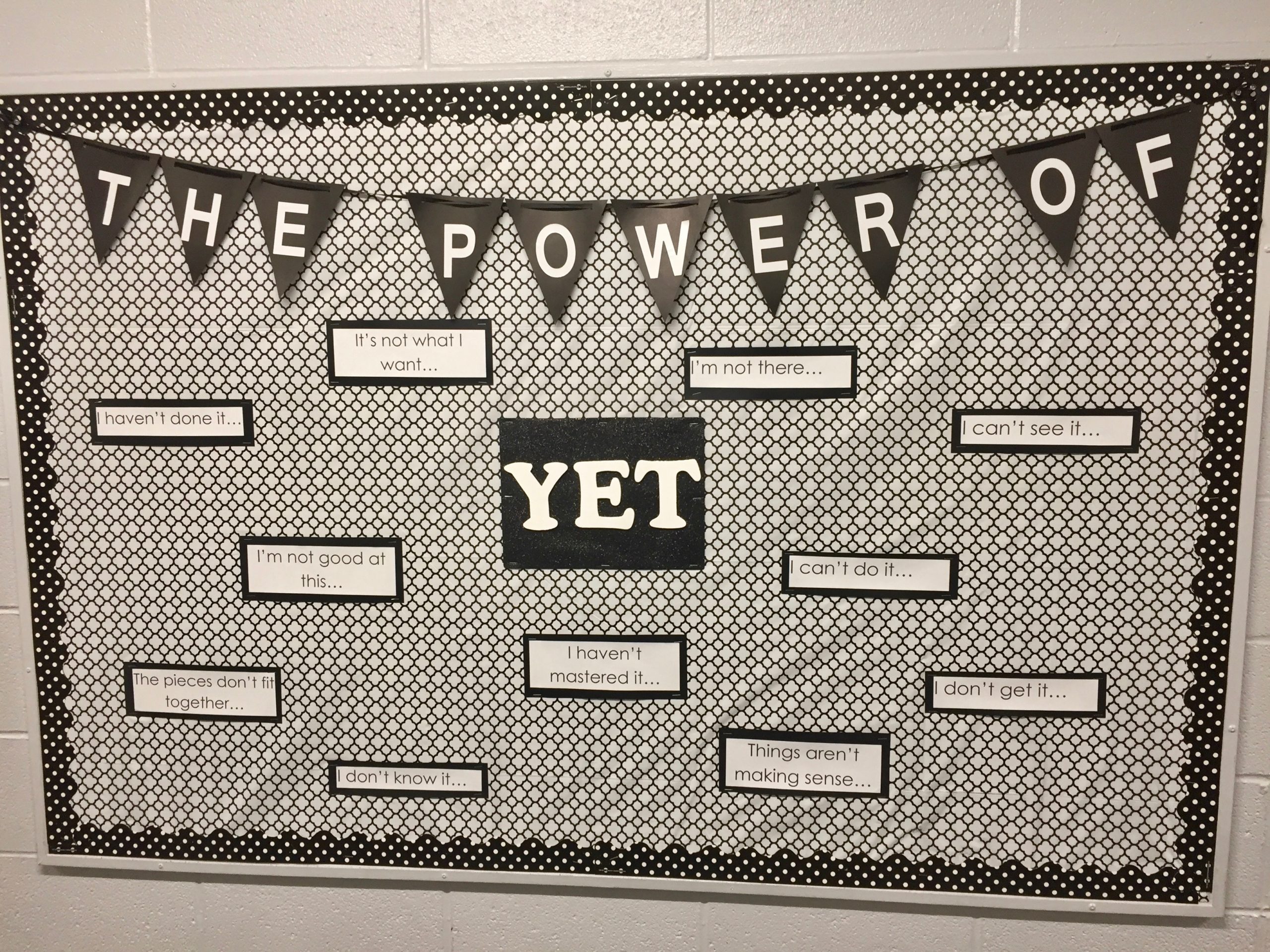I suppose the word to best describe what I was feeling at that moment was shock. Yes, shock which was instantaneously followed by surprise, disbelief and then uncertainty. I scanned the room, my eyes searching for a glimmer of acknowledgment; a connection, a possibility, a window through which the conversation could begin. My smile remained perfectly in place, never once giving away the overwhelming confusion brought on by the lack of response to what I truly believed to be a simple question. What was my query that appeared to stump my colleagues, seasoned teachers and respected leaders in the field of education?
“What resources or lessons have you been using in your classrooms in order to teach against Islamophobia?”
My question to my colleagues was a genuine one, in hopes of gaining some new insight, some direction and ultimately some brilliant children’s books and resources that I could use and recommend to others.
There are many activities that are already going on in our classrooms that build critical literacy. Reading novels written from the point of view of a child from another culture or set in another country; sharing stories about families and their religious traditions or considering the lives of young people like them who lived through war, persecution or poverty. As well, when we ask our students to write from the point of view of someone else – all of these classroom experiences are ways of developing critical literacy. As Melissa Thibault (2004) reminds us, these activities all serve the same purpose: they help the student to see the world through someone else’s eyes, to learn to understand other people’s circumstances and perspectives and to empathize with them.
Suggested Books: A starting point
I need to preface the upcoming book selections by stating that I am in no way forwarding them as exemplary works that must be used in every classroom. As I have learned, each of us comes to literacy with our own perspective, our own history and experience and our own knowledge and understanding. What I am proposing is a quick analysis of three eminent illustrated picture books with Muslim main characters and what I hope to offer is a point of entry into what has been and remains in most North American classrooms a curriculum that is for the most part neglected, misunderstood or feared.
One Green Apple (2006) by Eve Bunting is the story of a Muslim girl, Farah, on her second day in a new school and in a new country. She is joining her class on a field trip to an apple orchard and one cannot help but experience along with her the isolation she feels as she is set apart from her classmates in her inability to speak English and the reactions she receives by wearing a dupatta (headscarf). At the cider press, Farah adds a single green apple to her classmates red apples and although they protest at first, they happily drink up the sweet juice from the mixed apples and Farah begins to see some common threads between this culture and her own. This story, can heighten youngsters’ awareness of and empathy for the immigrant experience as well as what it must be like to feel different and alone.
Sami and the Time of the Troubles (1992) by Florence Parry Heide and Judith Heide Gilliland is another book to share with your students. In this story, ten year old Sami lives in Beirut, Lebanon. He and his family spend most of their time in the basement of his uncle’s home as bombing and gunfire fill the streets. Memories abound of a time “before the time of the troubles” and “the day of the children”. They sit listening to the radio and venture outside when the fighting subsides for the moment. There Sami goes to the beach, makes a fort with his friend and plays at war. This time outdoors is short lived and as the story closes we are back in the basement with Sami listening to the “noises of the night”.
Children as victims of war even when not directly in the line of battle are not unusual figures in children’s literature. This text though makes clear that war threatens not only physical survival but affects the human spirit as well. It is not done in a “let’s feel sorry for Sami” sort of way but instead gives us a thoughtful, understated narrative which forces us to think about current warfare and its effects on the innocent. We leave the story understanding how children and others try to carry on a normal life during a period of war and uncertainty.
The Librarian of Basra: A True Story from Iraq (2005) by Jeanette Winters is one book that will bring about much dialogue and discussion not only with young students but with teachers and educational leaders as well. In brief, the story is about the courageous exploits of Alia Muhammad Baker, chief librarian of Basra’s Central Library, who was responsible for saving 70 per cent of her library’s book collection. In April 2003, the invasion of Iraq reaches Basra. With the government refusing to help, she along with friends and community members, transfer some 30, 000 volumes first to a nearby restaurant and then to various homes only days before the library is burned to the ground.
Without a doubt, this story illustrates the impact one person can have in order to bring people together to work for a common cause. As well, it emphasizes the influence and value libraries and books have in cultures and communities all around the world. At this point, what also needs to be mentioned is this was one of the very first books (post 9/11) to find its way into elementary classrooms where the main character was from the Middle East. A great many children saw themselves in print and illustration for the very first time. Here their culture and their heritage were highlighted in a heroic and powerful manner. Thanks to this text, strength, bravery and selflessness were now depicted as qualities and characteristics synonymous with Islam.
In the Classroom
In order to properly prepare our students to be literate in this ever changing technological and multimodal world, we teachers need to reflect upon and challenge our own beliefs and understanding of literacy. Harwood (2008) advocates that “educators need to challenge children and provide balanced literacy opportunities that value the social-cultural construction of knowledge while reflecting the diversity of children’s lives.” (¶ 25). She strongly supports the notion that classroom “opportunities to collaborate, discuss, critique, deconstruct, and reconstruct a multitude of meaningful and radical texts (Kohl, 1995) are equally important in literacy development as learning to identify phonemes of sound.” (¶ 25).
For the sake of brevity, the definition of “radical texts” has been borrowed from Leland, Harste, Ociepka, Lewison, and Vasquez’s (1999) suggestions for choosing critical texts. Radical texts chosen for elementary aged children should meet the following criteria:
- Texts don’t make difference invisible, but rather explore what differences make a difference;
- Texts enrich children’s understanding of history and life by giving voice to those who have been traditionally silenced or marginalized;
- Texts show how people can begin to take action on important social issues;
- Texts should explore dominant systems of meaning that operate in our society to position people and groups of people;
- Texts should not provide “happily ever after” endings for complex social problems. (p. 70)
Children can be encouraged to think critically and answer critical questions that will enable them to examine their own insights as well as those presented in texts. Teachers need to encourage children to challenge the status quo of what is represented within texts, asking questions such as:
- Whose voice is heard and whose voice is left out?”
- Who is the intended reader? (For example asking, is the text intended for specific groups of people and if so how is that group portrayed?)
- What was the world like when the text was created?
- What does the author want you to feel or think?
- What does the author expect you to know or value?
- What does the text say about boys (about girls)?
- Is it important that the main character is beautiful (powerful/wealthy)? (Harwood, 2008)
This list is not exhaustive, and the critical questions that arise will often depend on the children and the issue involve. There is no single ‘recipe’ of how to incorporate critical literacy within an elementary school curriculum so teachers need to work against the “commodification” (Luke & Freebody, 1999, p. 6) of critical literacy, as they begin to recognize the important benefits of fostering children’s critical viewing of texts. Harwood (2008) does well to remind us that children’s interests and questions should also be incorporated into the literacy curriculum and form an important addition to the critical questions that arise. By honouring children’s own natural curiosity and using their inquisitiveness as a starting point, greater depth and engagement with texts is possible.
A short while back, I walked into a room where a couple of my colleagues were sitting hard at work deep in the throes of curriculum development. As I approached to see what they were doing, one dear friend looked up at me, her face bursting with excitement, “Oh! I’m so glad you’re here! I have found a wonderful book that I know you’re going to love!” As I watched her sift through the pile of children’s books that lay strewn across the table, I wondered what marvelous gem she was about to share with me. The Golden Sandal: A Middle Eastern Cinderella Story by Rebecca Hickox was the title she eagerly placed in my hands. Shock, surprise and disbelief again washed over me, but this time confusion did not follow. Instead, what came next was a lengthy conversation about the book, the story line and all the possibilities that could come from sharing this piece of literature with our students.
Further Resources to Examine:
Bunting, Eve. (2006). One Green Apple. New York: Clarion Books.
Habbas, Corey. (2008). The Runaway Scarf. Arizona: Muslim Writers Publishing.
Heide, Florence Parry and Gilliland, Judith Heide. (1992). Sami and the Time of the Troubles. New York: Clarion Books.
Heide, Florence Parry and Gilliland, Judith Heide. (1990). The Day of Ahmed’s Secret. New York: Mulberry Books.
Hickox, Rebecca. (1999). The Golden Sandal: A Middle Eastern Cinderella Story. New York: Holiday House.
Khan, Rukhsana. (1988). The Roses in my Carpets. Ontario: Fitzhenry & Whiteside.
Mobin-Uddin, Asma. (2005). My Name is Bilal. Pennsylvania: Boyds Mills Press.
Mortenson, Greg and Roth, Susan L. (2009). Listen to the Wind: The Story of Dr.Greg & Three Cups of Tea. New York: Dial Books.
O’Brien, Tony and Sullivan, Mike. (2008). Afghan Dreams: Young Voices of Afghanistan. New York: Bloomsbury.
Oppenheim, Shulamith Levey. (1995). The Hundredth Name. Pennsylvania: Boyds Mills Press.
Robert, Nai’ima Bint. (2002). The Swirling Hijaab. London: Mantra Lingua.
Rumford, James. (2008). Silent Music. New York: Roaring Brook Press.
Shihab Nye, Naomi. (1994). 19 Varieties of Gazelle: poems of the Middle East. New York: Harper Collins.
Shihab Nye, Naomi. (1994). Sitti’s Secrets. New York: Aladdin Paperbacks.
Shihab Nye, Naomi. (1998). The flag of childhood: poems from the middle east. New York: Aladdin Paperbacks.
Williams, Karen Lynn and Mohammed, Khadra. (2007). Four Feet, Two Sandals. Michigan: Wm. B. Eerdmans Publishing Co.
Winter, Jeanette. (2005). The Librarian of Basra: A True Story from Iraq. Orlando: Harcourt Inc.
References
Harwood, D. “Deconstructing and Reconstructing Cinderella: Theoretical Defense of Critical Literacy for Young Children”. Language and Literacy, volume 10, issue 2, Fall 2008.
Kohl, H. (1995). Should we burn Babar? Essays on children’s literature and the power of stories. New York: The New Press.
Lelande, C., Harste, J., Ociepka, A., Lewison, M., & Vazquez, V. (1999). Exploring critical literacy: You can hear a pin drop. Language Arts, 77(1), 70-77.
Luke, A., & Freebody, P. (1999). A map of possible practices: Further notes on the four resources model. Practically Primary, 4(2), 3-8.
Thibault, Melissa, “Children’s literature promotes understanding.” LEARN North Carolina, 2004.







Really interesting and timely blog post Melanie. I especially liked the section on radical texts, and the first notion of finding texts that “don’t make difference invisible, but rather explore what differences make a difference.” I also thought about different media that could be used, because what popped into my head was a casual youtube video I stumbled upon recently that absolutely fascinated me. http://youtu.be/_jVeZdjeOgk It’s really nothing more that a walk through the streets of Mecca. But I was mostly struck with just how similar we are all, just city dwellers, country visitors, tourists, and by the process I went through looking for differences that might make a difference.